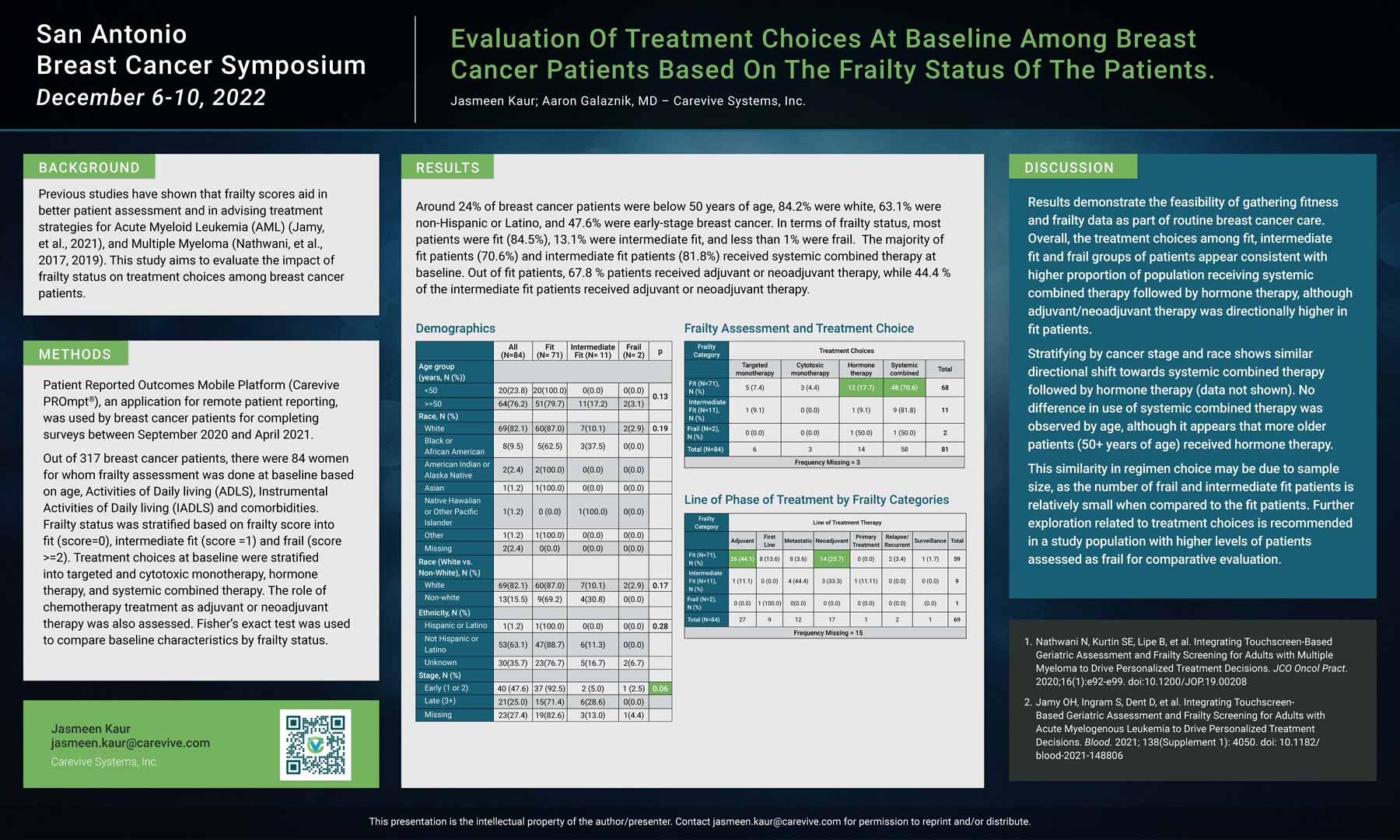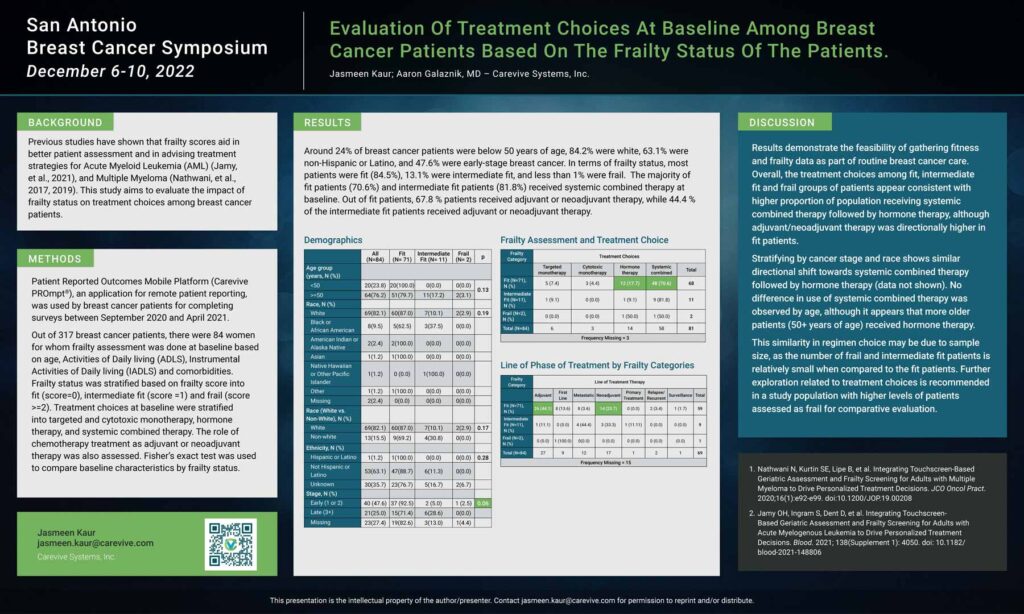
Author: Jasmeen Kaur; Aaron Galaznik, MD – Carevive Systems, Inc.
Background
Patient Reported Outcomes Mobile Platform (Carevive PROmpt®), an application for remote patient reporting, was used by breast cancer patients for completing surveys between September 2020 and April 2021.
Out of 317 breast cancer patients, there were 84 women for whom frailty assessment was done at baseline based on age, Activities of Daily living (ADLS), Instrumental Activities of Daily living (IADLS) and comorbidities. Frailty status was stratified based on frailty score into fit (score=0), intermediate fit (score =1) and frail (score >=2). Treatment choices at baseline were stratified into targeted and cytotoxic monotherapy, hormone therapy, and systemic combined therapy. The role of chemotherapy treatment as adjuvant or neoadjuvant therapy was also assessed. Fisher’s exact test was used to compare baseline characteristics by frailty status.
Results
Around 24% of breast cancer patients were below 50 years of age, 84.2% were white, 63.1% were non-Hispanic or Latino, and 47.6% were early-stage breast cancer. In terms of frailty status, most patients were fit (84.5%), 13.1% were intermediate fit, and less than 1% were frail. The majority of fit patients (70.6%) and intermediate fit patients (81.8%) received systemic combined therapy at baseline. Out of fit patients, 67.8 % patients received adjuvant or neoadjuvant therapy, while 44.4 % of the intermediate fit patients received adjuvant or neoadjuvant therapy.
See poster image for more. results.
Discussion
Results demonstrate the feasibility of gathering fitness and frailty data as part of routine breast cancer care. Overall, the treatment choices among fit, intermediate fit and frail groups of patients appear consistent with higher proportion of population receiving systemic combined therapy followed by hormone therapy, although adjuvant/neoadjuvant therapy was directionally higher in fit patients.
Stratifying by cancer stage and race shows similar directional shift towards systemic combined therapy followed by hormone therapy (data not shown). No difference in use of systemic combined therapy was observed by age, although it appears that more older patients (50+ years of age) received hormone therapy.
This similarity in regimen choice may be due to sample size, as the number of frail and intermediate fit patients is relatively small when compared to the fit patients. Further exploration related to treatment choices is recommended in a study population with higher levels of patients assessed as frail for comparative evaluation.
References
- Nathwani N, Kurtin SE, Lipe B, et al. Integrating Touchscreen-Based Geriatric Assessment and Frailty Screening for Adults with Multiple Myeloma to Drive Personalized Treatment Decisions. JCO Oncol Pract. 2020;16(1):e92-e99. doi:10.1200/JOP.19.00208
- Jamy OH, Ingram S, Dent D, et al. Integrating Touchscreen- Based Geriatric Assessment and Frailty Screening for Adults with Acute Myelogenous Leukemia to Drive Personalized Treatment Decisions. Blood. 2021; 138(Supplement 1): 4050. doi: 10.1182/ blood-2021-148806

